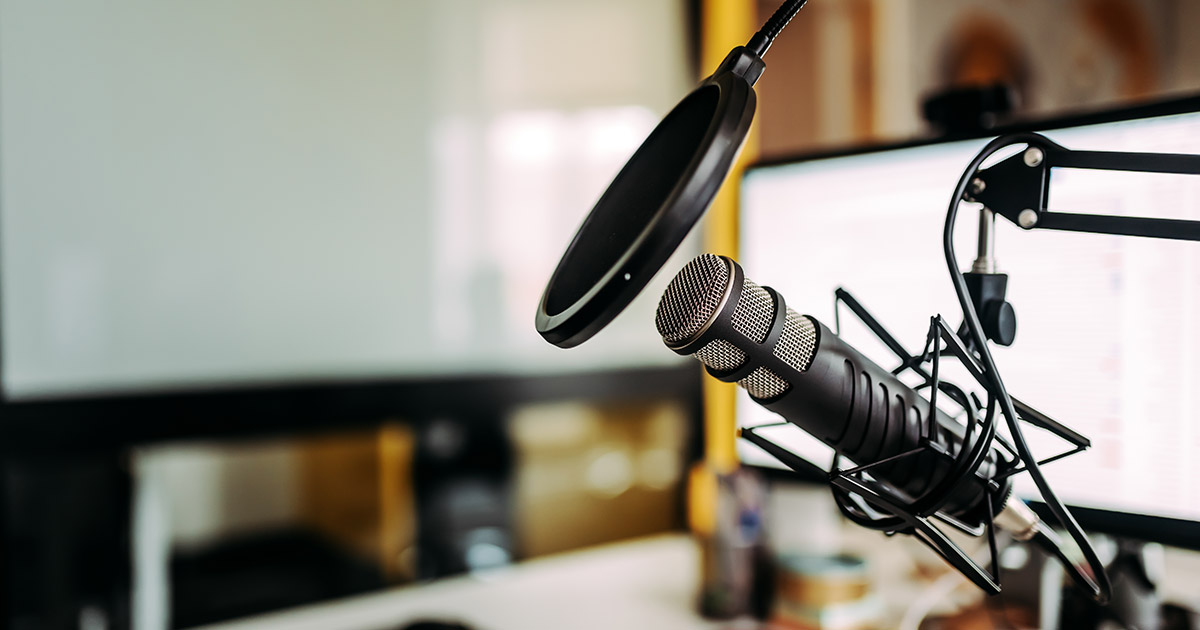How to Produce Engaging Interviews
Ben Shepard joins the Huang Fellows to discuss the nuances of podcast interviews.As someone who spends a majority of their free time with headphones on and music playing in the background, the idea of developing a podcast seemed like more than an assignment. It’s always any audiophile’s dream to use tools and instruments to create seemingly elegant noises and sounds that we define as “music”; In this case, however, the instrument was our voice.
Before this seminar, the thought of listening to a podcast lacked in my consciousness. In fact, the extent to which I understood podcasts ended at the word itself – this void in knowledge would quickly be filled.
Ben began his presentation by discussing the various aspects that comprise a successful podcast, two of which were “good storytelling” and “interviewing”. However, much to my surprise, the list didn’t end here but continued to include exceptional audio, fitting music, and pacing. Initially, I was a bit surprised that considerations as simple as audio quality were approached with such vitality. Similarly, I always assumed that fitting music was simply needed to block out awkward silences. These assumptions were quickly disproven as Ben explained how these factors help lead the audience through the discussion and ensure clarity and engagement from the listener.
After talking briefly about the composition of a podcast and the small details involved in elegantly crafting one’s voice, he then began to discuss a topic that typically left me anxious and worried: interviews. At this point, the daunting Huang fellows interview still lingered in my head and the lost and confused feeling I experienced in that interview room all came rushing back, but luckily, Ben was going to talk about hosting interviews rather than being the victim of one. In addressing this topic, he mentioned creative ways of recording and hosting an interview: positioning the microphone off-axis from the subject’s mouth, asking open-ended questions, and even going against your impulse and asking your guest to repeat themselves.
At this point, it struck me.

Compared to a typical interview that is centered around the interviewer and interviewee, in this case, we need to consider a third factor: the audience. In a podcast, your ability to both communicate your thoughts and interact with your interviewee is overshadowed by the need to ensure your audience is being engaged. I recognized that even if you are having a rich, insightful conversation, it is integral that you make your audience feel present – it should feel like listeners are sitting right next to you weighing in on the conversation.
After addressing the nuances of interviews Ben closed by humorously introducing concepts such as vocal fry and upspeak through examples from pop culture.
By the end of Ben’s talk, I gained a newfound appreciation for podcast creators. Moreover, I learned that the human voice can be used to communicate so many emotions and ideas and there is a myriad of ways to do so. From adding emotional color to pausing at the right moments, to repeating dialogue, one may change the course of a conversation and its interpretation.
More broadly, I understood that to make a podcast or simply record a conversation, it’s the seemingly irrelevant details that matter the most. So next time I listen to some music or play an instrument, I’ll know that every note can make a difference.
Nikhil Gadiraju, Huang Fellow ’23
 Nikhil is an undergraduate student from Apex, North Carolina majoring in Biomedical Engineering with a minor in Chemistry.
Nikhil is an undergraduate student from Apex, North Carolina majoring in Biomedical Engineering with a minor in Chemistry.

